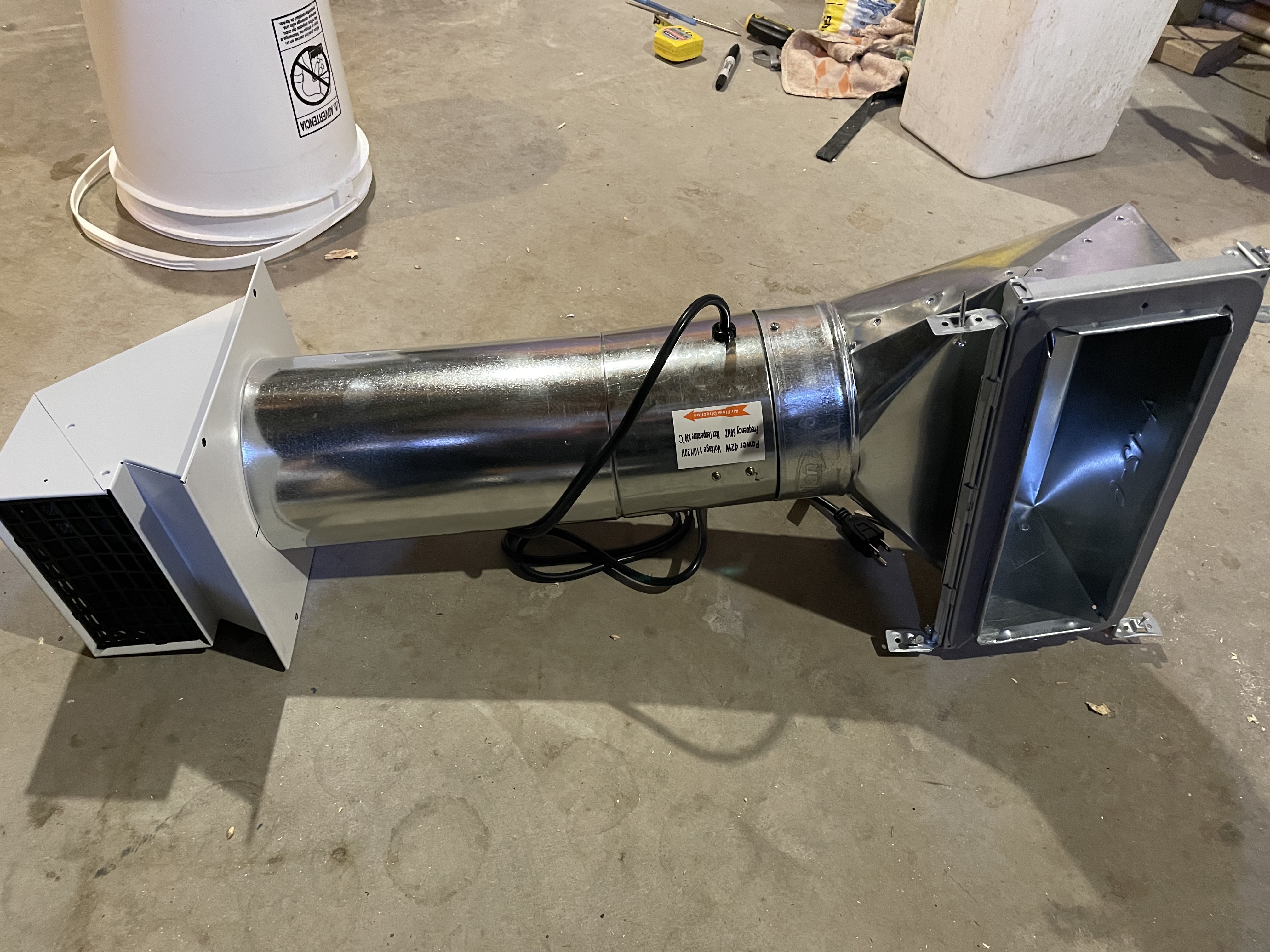I would recommend a SteamSlayer instead of venting.
https://www.brewhardware.com/product_p/steamslayer.htm
There are three things many people in your position don't realize:
1. Electric brewing is amazingly quiet... UNTIL you put a jet engine above your head to remove the steam.
2. The vent fan you just struggled to integrate into a bunch of ductwork is underpowered (low CFM) so you still get condensation dripping back down over the kettle. This is especially true if you have real winters (and I think you do).
3. To push adequate air volume out to remove the moisture, air has to come from somewhere. That might be from your furnace or water heater flue which creates a down draft and possible carbon monoxide situation. It might come in through several leaky window/door gaps around the house adding to your heating and cooling bills and discomfort.
If you must vent, I would put a fan in the window like this, but sized to whatever you need to fill the opening...
https://www.amazon.com/Comfort-CZ31...2c4b9&pd_rd_wg=uhwG0&pd_rd_i=B0118ECP7M&psc=1
That solution will get you the CFM you'll need with a slightly lower noise volume. Crack open a window elsewhere for incoming air.







